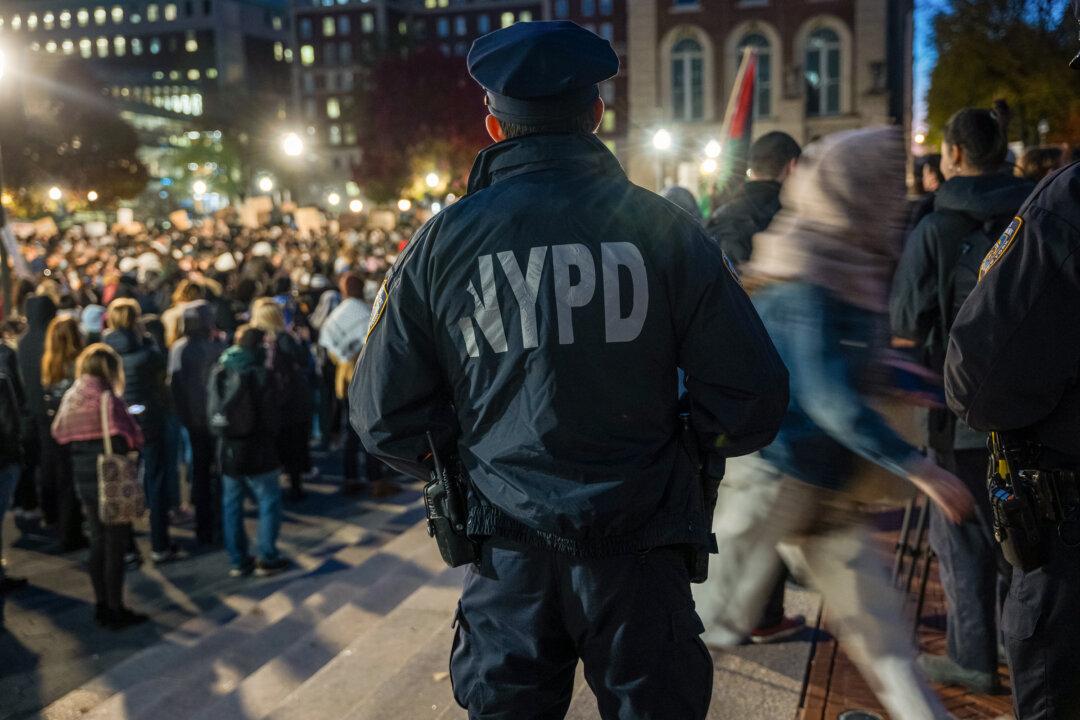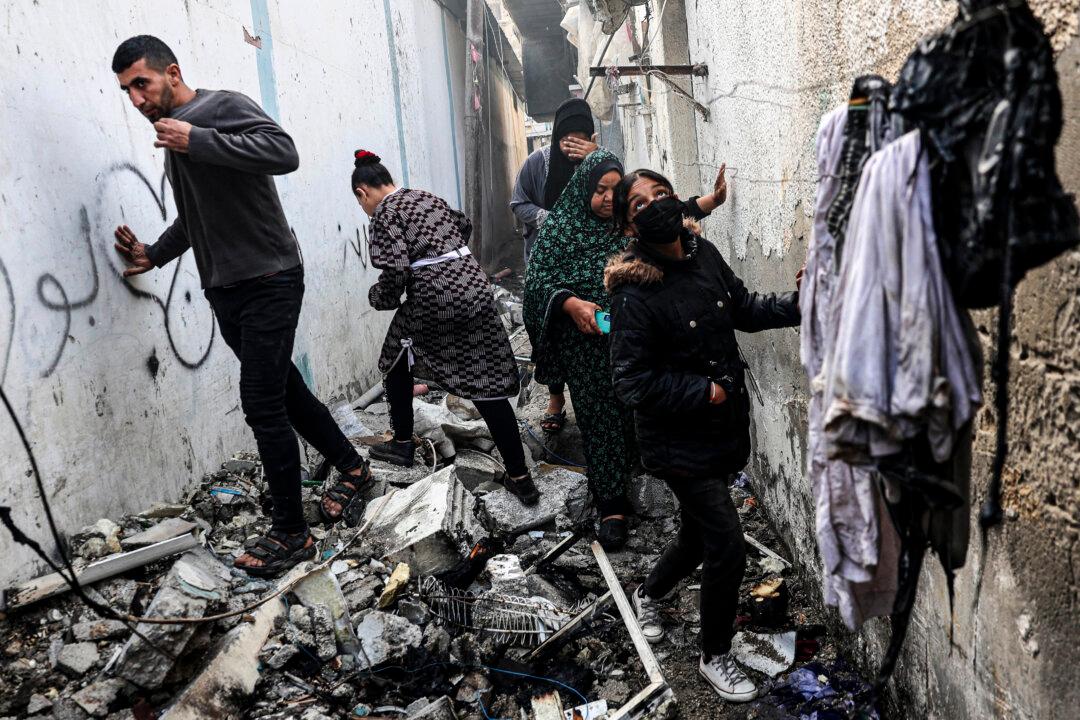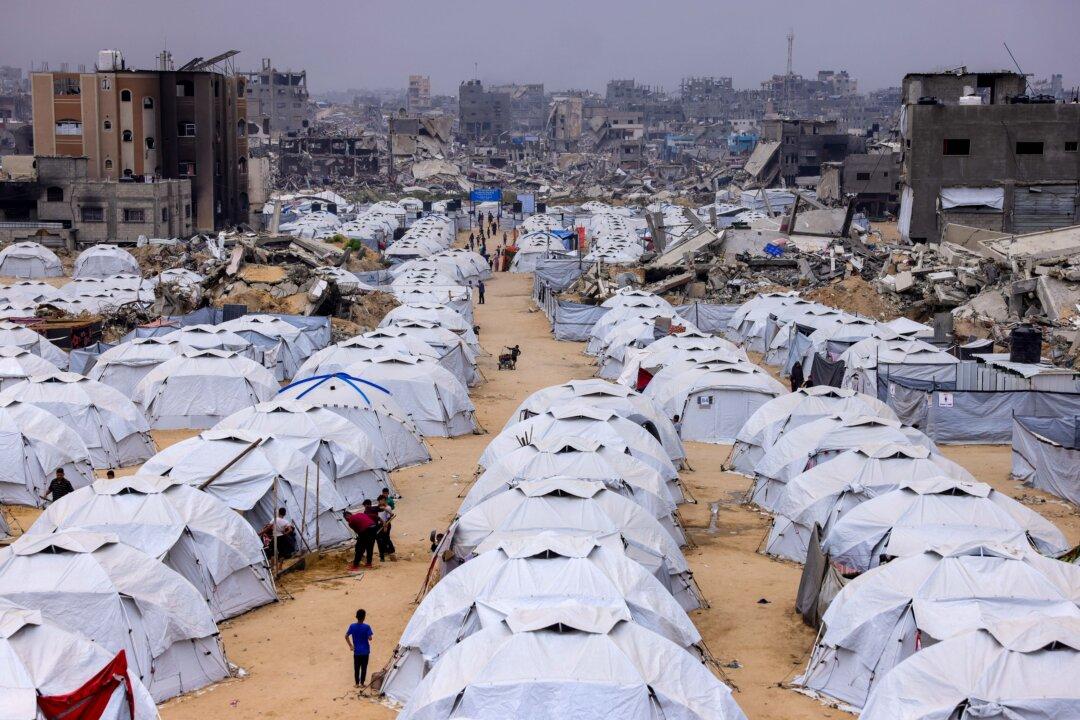Israel has made some good but limited progress in increasing the flow of humanitarian aid to the Gaza Strip and therefore the United States will not limit arms transfers to the country, the State Department said in a Nov. 12 statement.
“We’ve seen some steps being taken over the past 30 days. Specifically, we have seen the reopening of the Erez crossing. We have seen a new crossing at Kissufim open. As it relates to the Jordanian armed forces corridor, we have seen a waivement of certain customs requirement that humanitarian organizations had previously said was an obstacle,” State Department spokesman Vedant Patel told reporters on Nov. 12.
“We’ve also seen some additional delivery routes open within Gaza, including Bani Suheila Road, expanding the use of the Israeli fence road, as well as repairing the coastal road. We’ve also seen some deliveries resume and [be] restored in the north, first to Gaza City, and in this most recent week to areas surrounding Jabalia. We’ve also seen the expansion of the Mawasi humanitarian zone, and we have seen the institution of periodic operational pauses.”
Patel said the United States has not at this time “made an assessment that the Israelis are in violation of U.S. law.”
However, relief groups say conditions in Gaza are worse than at any point in the 13-month-old war.
Letter from Blinken, Austin
Austin and Blinken’s Oct. 13 letter revealed the two U.S. officials warning that Israel would need to make improvements within 30 days. Should Israel fail to do so, the U.S. officials said, there may be “implications for U.S. policy under NSM-20 and relevant U.S. law.”The Oct. 13 letter called on Israel to allow a minimum of 350 truckloads of goods to enter Gaza daily, open a fifth border crossing, allow refugees in coastal tent camps to move inland as winter approached, and allow aid groups access to northern Gaza.
One condition Israel met was opening a fifth border crossing into Gaza, near the Israeli town of Kissufim east of Khan Yunis. An Israeli official told reporters that Israel had also expanded the coastal humanitarian zone, increased security for aid vehicles, and managed joint task forces with the international community and others to improve the situation.
The Israel Defense Forces (IDF) stated on Nov. 11 that it was expanding a second humanitarian zone in southern Gaza.
However, Israel failed to allow the mandated number of trucks. Israeli figures show an average of 57 trucks entering per day in October and 81 per day during the first week of November. The United Nations reported a lower figure, averaging 37 trucks per day since the beginning of October.
An Israeli official provided higher numbers, saying 50 trucks enter northern Gaza daily, with an additional 150 trucks crossing into the rest of Gaza.

About 34,000 tons of food entered Gaza in October, less than half the previous month, according to Israeli data.
Last month, Stephane Dujarric, spokesperson for U.N. Secretary-General António Guterres, said that “repeated efforts to deliver humanitarian supplies” were being “denied by the Israeli authorities.”
Brig. Gen. Elad Goren, who heads the Israeli military body overseeing humanitarian and civil efforts in Gaza, called the spokesperson’s charge a “100 percent pure, complete lie.” He said the U.N. committed 69 workers and 40 trucks to the aid distribution effort.
“We feel that the U.N. does not want to be excellent in their job because they believe that if they do their job, it will ease pressure on Israel,” Goren said.

Dujarric said, “Our humanitarian colleagues ... access these border areas by highly dangerous routes, exposed to hostilities, with many alternative roads banned by the Israeli authorities. The routes available are often in poor condition and prone to armed looting. Commercial supplies are virtually banned.”
Goren’s agency, the Coordination of Government Activities in the Territories (COGAT), provided data and video footage showing the number of trucks backed up at the Kerem Shalom crossing rose from 450 on Oct. 1 to 700 on Oct. 30.
The U.N. fails to collect aid, creating bottlenecks, and up to 40 percent of goods shipped are stolen by Hamas terrorists and organized crime families, COGAT stated.
Goren stated that COGAT had met with the U.N. several times to resolve the problems, offering alternative roads that would bypass looters, allowing Palestinian trucks to move on defense roads from Israeli territory, and providing escorts for the trucks.
Dujarric said allowing aid to back up at entry points was not enough. He pointed to thousands of employees from the U.N. and the U.N. Relief and Works Agency (UNRWA), its Palestinian aid agency, who were available to help with the effort.
The Israeli military operations in the Gaza Strip are in response to the Oct. 7, 2023, Hamas-led attacks in southern Israel, in which 1,200 people were killed and about 250 others taken hostage. Since then, Israeli forces have sought to eradicate Hamas and to secure the release of the remaining hostages.
More than 43,000 people have been killed in Gaza, according to the Gaza Health Ministry, which does not distinguish between civilians and terrorists but does say more than half of those killed were women and children. Exact casualty figures cannot be independently verified at this time.







